Hoka Challenger 7 Review (2024): Is It Right for You?
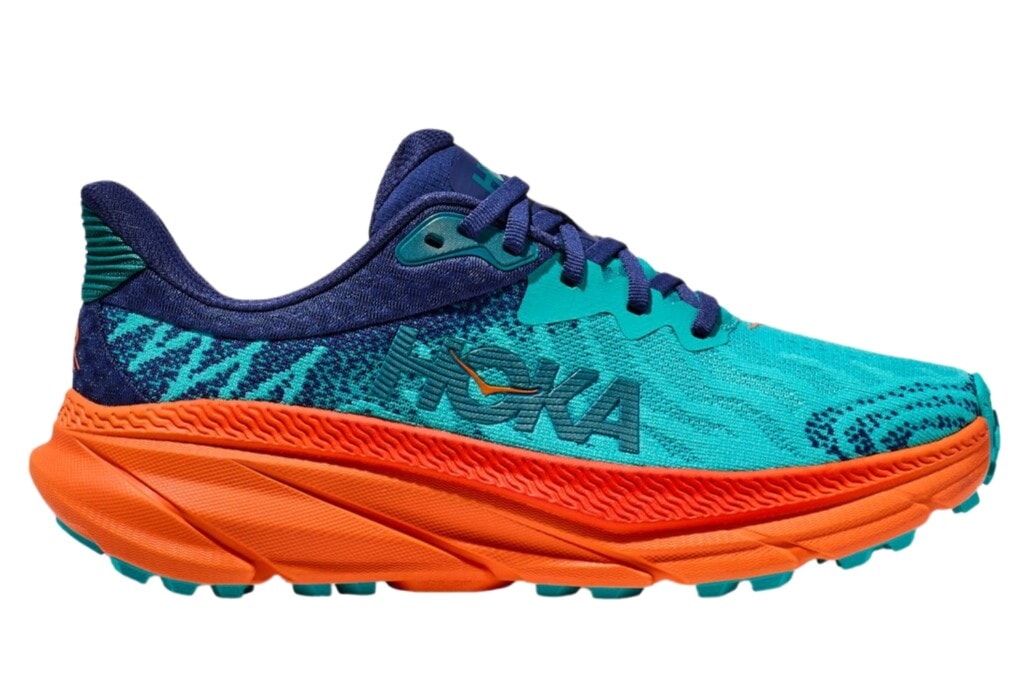
Consensus
A great all-terrain shoe for trail running. A sure bet for easy long runs!
Don’t have time to read the full review? Here’s what you need to know.
Change for the sake of change was not Hoka’s mission when it released this Challenger 7. The least we can say is that the upgrades made to this new model make it even more off-road than its predecessors.
The most notable out-of-the-box is the loss of almost 1.4 oz / 40 g per shoe and the gain of 2 mm in stack height. The resulting lightness and comfort allow for lively sessions on Hoka Challenger 7’s preferred terrain (dirt roads and forest trails) and even a few pleasant forays onto the road.
The outsole features more aggressively angled lugs for improved flexibility and grip on more technical terrain.
In short, the Hoka Challenger 7 remains a safe bet for runs on long, easy, moderate trails. It’s also a good addition to any trail shoe rotation for recovering from more technical days.
Please read our full review of the Hoka Challenger 7 for more information.
PROS
- Highly versatile for road/trail runs
- Lightweight shoe despite thick midsole
- Cushioning balanced between softness and responsiveness
- Bulletproof mesh
- Aggressive lugs
- Fun, modern colors
CONS
- Slightly limited grip and stability on technical terrain
- Toe box is a little tight in the forefoot
Introduction
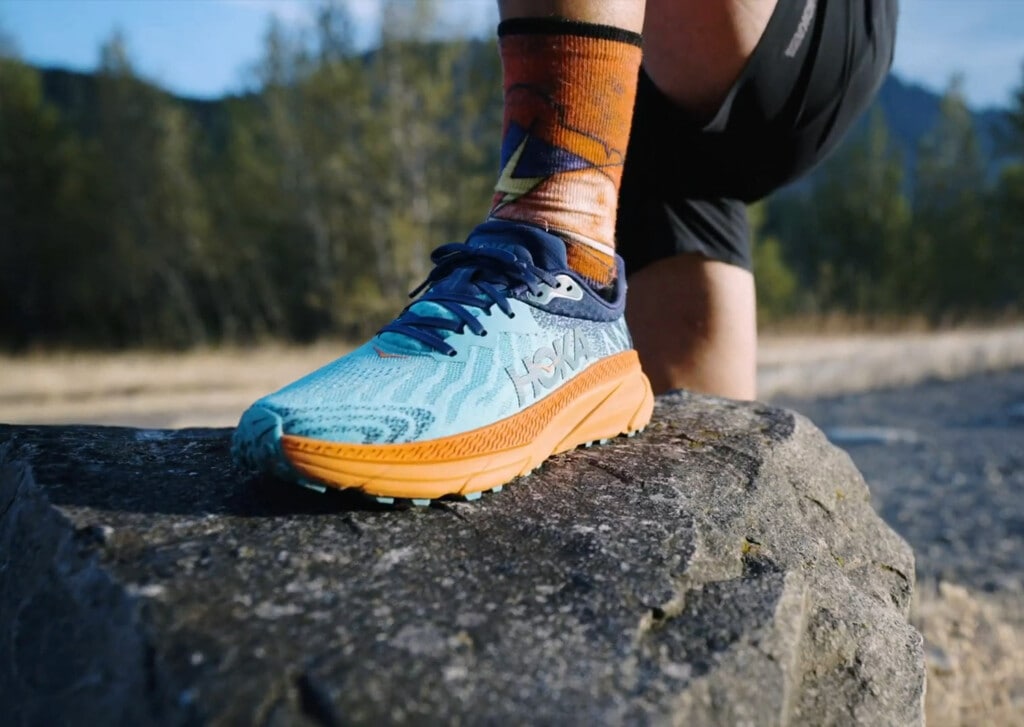
The model may have lost the all-terrain element of its name (ATR), but the vocation of the Challenger 7 remains the same: hybrid trail shoes designed to take you on the best roads and trails.
To achieve this, the brand has spared no expense in making changes to the previous version. Almost everything is new: the construction, the materials, the colors, the weight.
So, does this completely redesigned trail shoe live up to its promise? Can fans of the past models find their way around this heap of new features? What are the impressions of our testers? We’ll find out in the rest of this article!
Grip
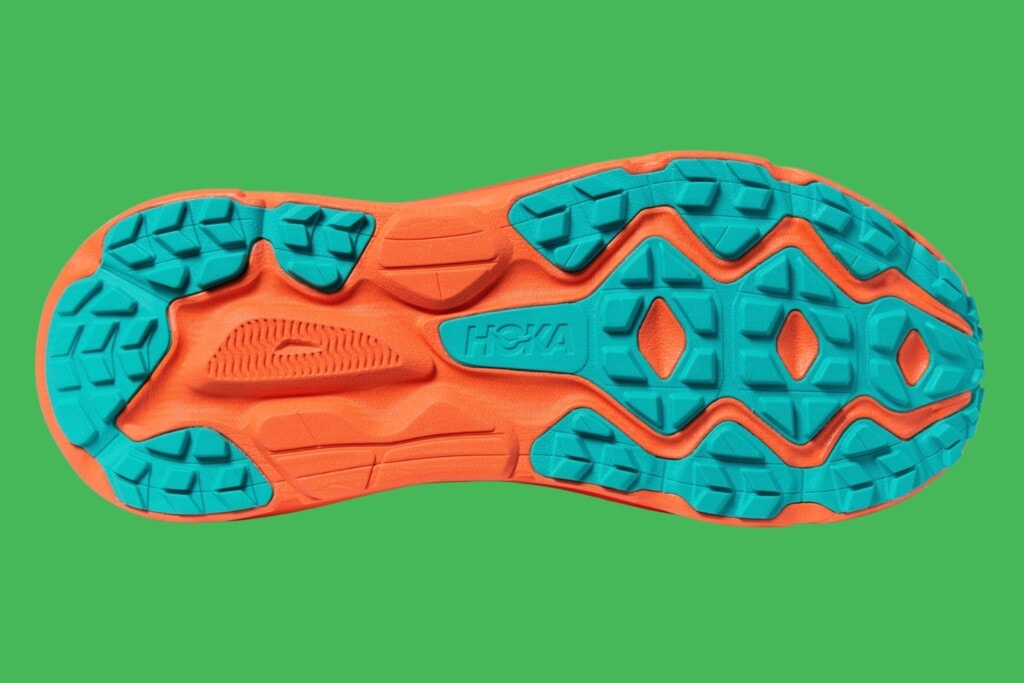
Trail runners are unanimous: the grip of the Durabrasion outsole rubber is most effective on its preferred terrain: dry paths.
Despite the impressive amount of midsole exposed, it doesn’t fall short on more technical surfaces such as rocky trails, gravel paths, and even slightly damp undergrowth.
However, according to our testers, versatility reaches its limits when terrain conditions become more hostile (slippery rocks, sticky mud, snow, ice). At the same time, this is not its vocation, as other Hoka models are better suited to such conditions (Speedgoat, Mafate).

The design of the 4 mm lugs has evolved. They are more widely spaced in the center for greater flexibility and more aggressive on the sides and heel to guarantee excellent traction and better protection.
Last but not least, the front of the outsole forms a relatively soft rubber stone guard that effectively protects the toes in case they come too close to rocks or roots, making it highly suitable for toe strikers on mild or moderately technical terrain.
Cushioning
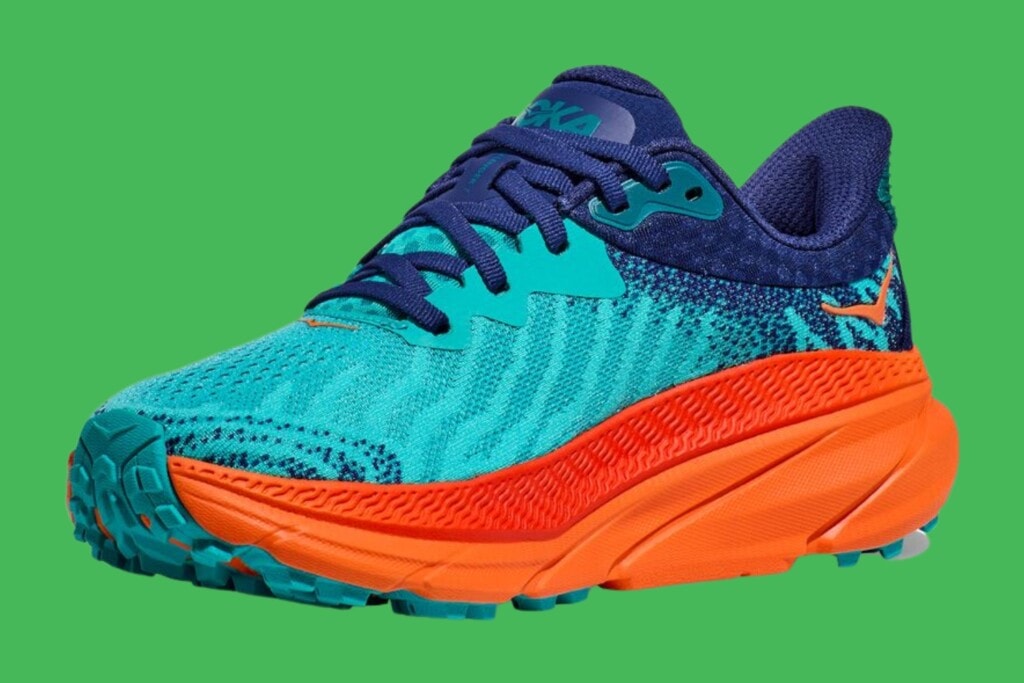
The new compression-molded EVA foam in Hoka 7 provides comfortable cushioning that is universally appreciated by trail runners who have tested this shoe. It’s just as soft as it needs to be, with a touch of firmness and a hint of responsiveness to make long-distance running a pleasure.
Moreover, there’s more midsole foam, making the stack height go up by 2 mm (31 mm at the heel / 26 mm at the toes) while keeping the shoes in the same weight zone (see next section). So, despite the added foam, the shoe remains insanely light (for its category)!
Plus, the heel-to-toe drop of 5mm doesn’t change either, which is perfectly suited for keeping control on trails or gravel roads and having the ground feel as it should.
There’s no doubt about it: Hoka knows what it’s all about when it comes to midsoles!
Foot lockdown
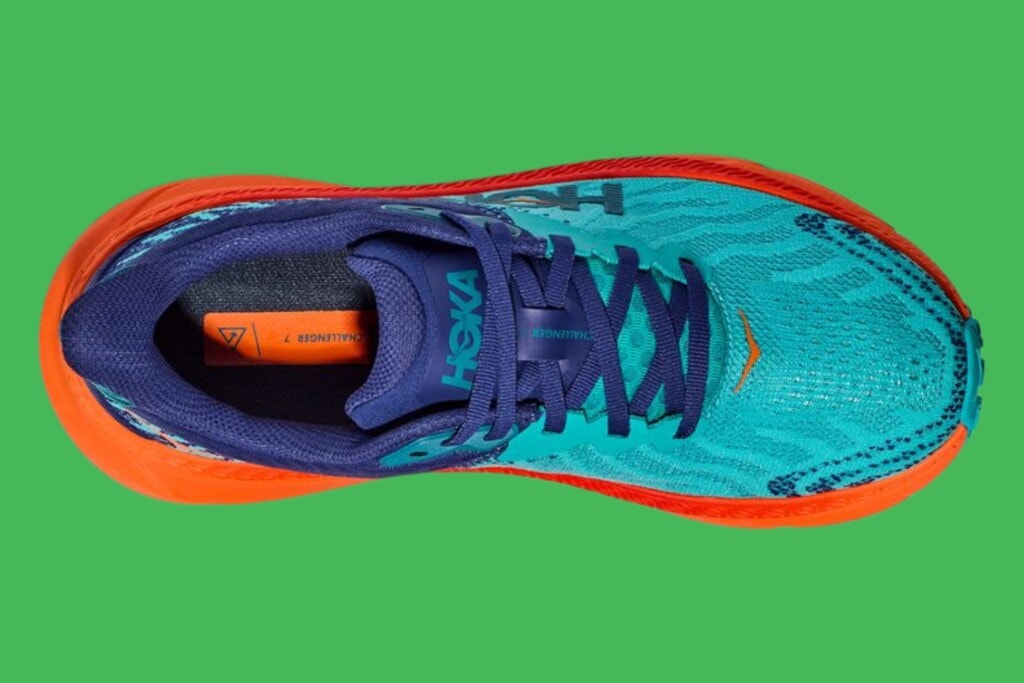
This shoe part is responsible for one of the most important evolutions of the Hoka Challenger 7: its weight!
At 8.9 oz / 252 g for the men’s version (7.7 oz / 218 g for the women’s), it weighs 1.4 oz / 39 g less than the previous model, even after increasing the thickness of its midsole and reinforcing the padding of the upper.
This real technical feat places it directly in the lightweight category for trail shoes.
The fine yet dense engineered mesh is constructed in a single piece. It envelops the foot more precisely, streamlined, guaranteeing secure foot lockdown.
Moreover, the 3D overlays reinforce the fabric’s durability.
Finally, a sturdy heel counter, a heavily padded gusseted tongue, and simple, effective flat laces complete the package.
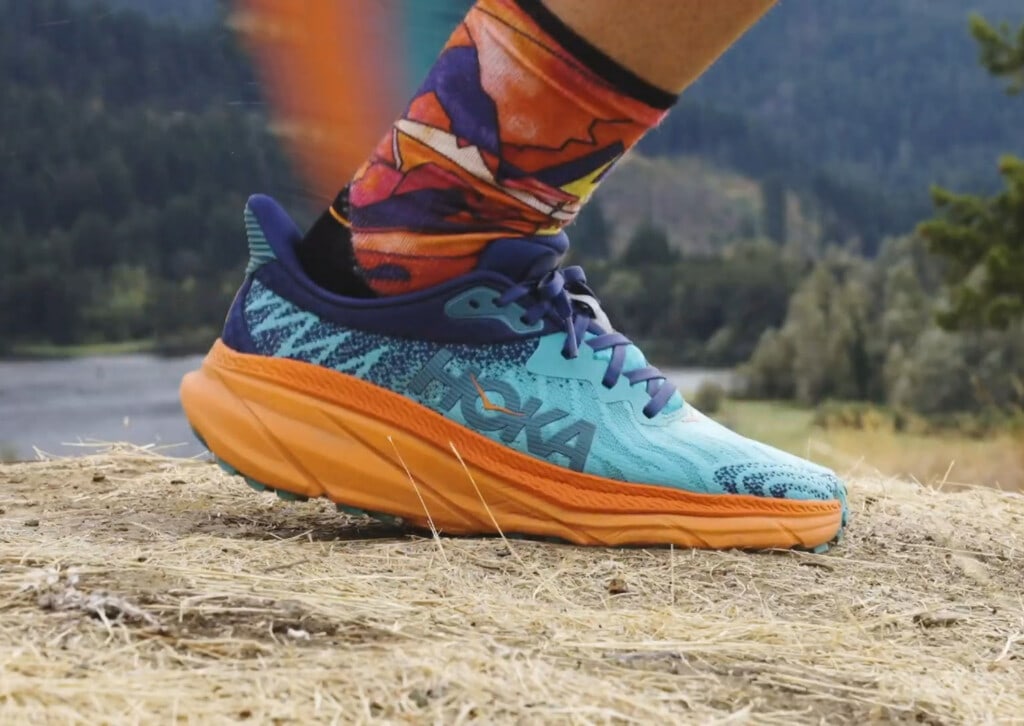
According to runners’ reviews, it’s not the most breathable upper on the market, but it gets the job done in the shoulder season or if you like your feet warm.
Also, it doesn’t let trail debris in, which is a definite advantage when running on trails strewn with gravel or small pebbles.
However, some reviewers complained that the toe box on the basic model is a little narrow. But luckily, a “wide” version exists, which is always good to know for runners with wide feet.
Others also complained that the midfoot fit was too narrow.
Ride

Out of the box, the overall sensation is a smooth, comfortable ride. Much of the credit for this goes to the materials used in the upper and its substantial cushioning.
The outsole’s sturdiness also stabilizes the cushioning’s softness, providing a slight bounce. This makes it a pleasant winning combo for rolling out the miles at a moderate pace on the trails.
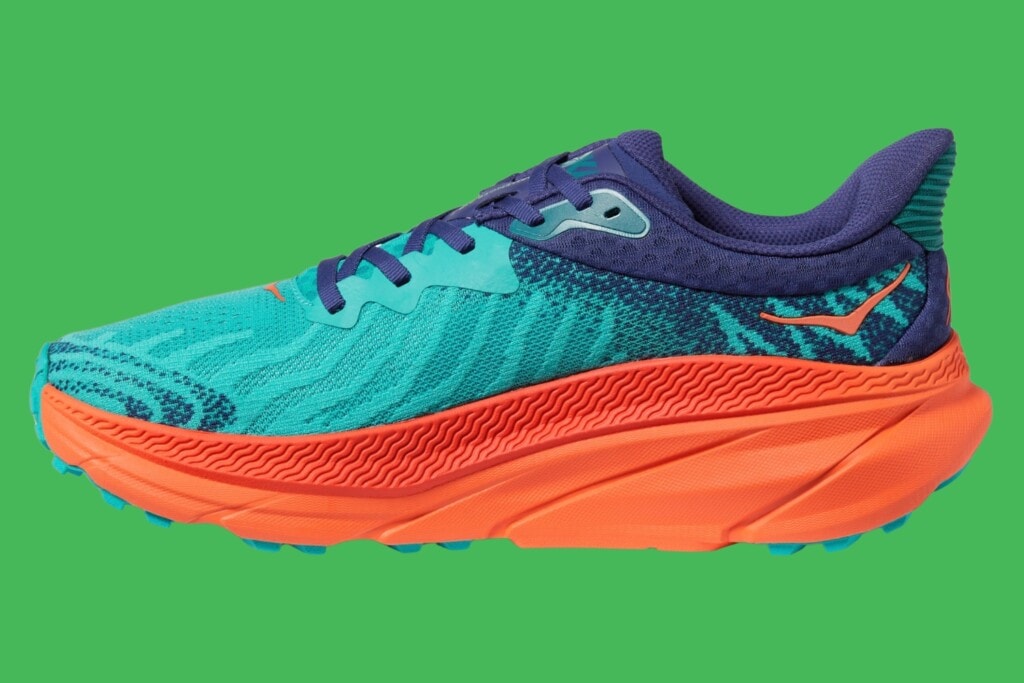
Testers praise the presence of a highly effective rocker with a welcome front flex point to facilitate climbing and acceleration on flat surfaces.
Meanwhile, heel strikers also appreciate the wide rear platform’s cushioning, making the transitions fluid.
In short, the Challenger 7 is an ideal trail shoe on dirt roads and forest paths for easy, everyday mileage, recovery, or long runs at a slow to moderate pace.
However, some runners felt less secure on technical trails than on moderate trails due to a lack of stability induced by a loose midfoot. While others reported that it felt like they had “too much shoe on.”
Conclusion
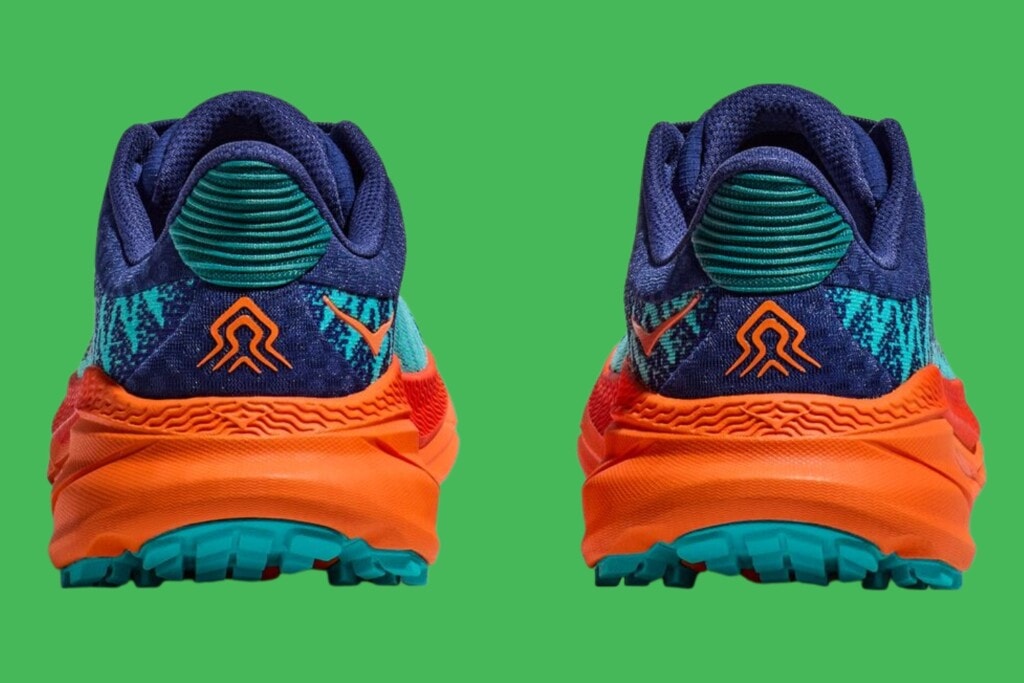
If you’re a trail runner, beginner, or experienced, looking for hybrid shoes that are comfortable, lightweight, versatile, and relatively responsive for long runs (or not) at a moderate pace on just about any terrain, look no further than the Hoka Challenger 7!
Facts
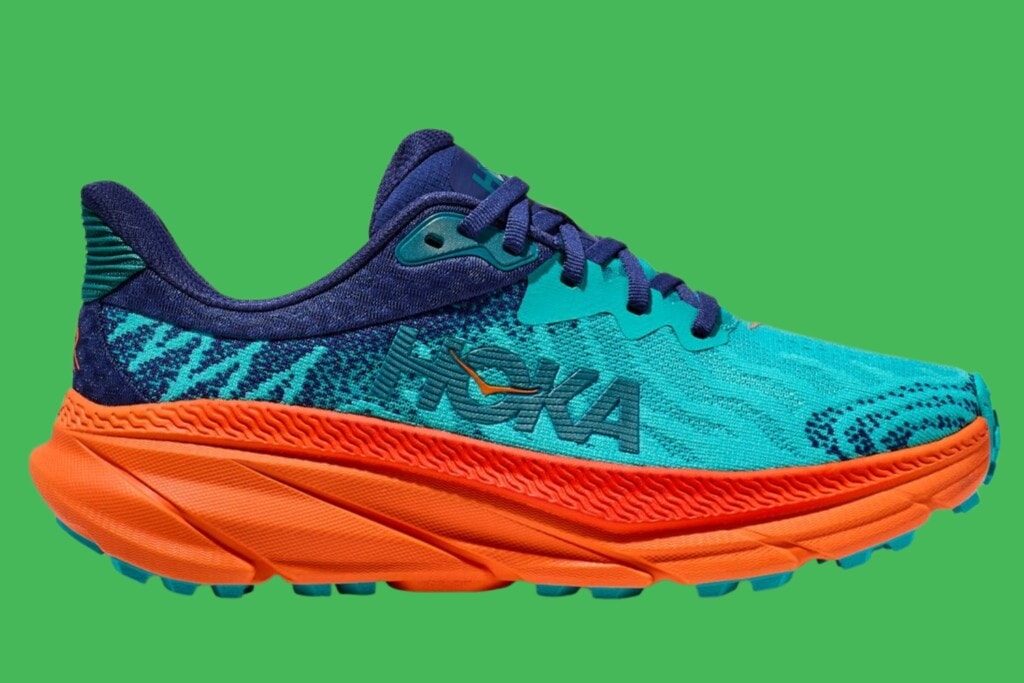
Technical Specs
| Terrain | Trail |
| Pronation type | Neutral |
| Drop | 5 mm |
| Heel height | 31 mm |
| Forefoot height | 26 mm |
| Lugs | 4 mm |
| Weight (men) | 252 g/8.9 oz |
| Weight (women) | 218 g/7.7 oz |
| Features | Vegan, Recycled materials |
| Athletes | |
| Release year | 2023 |
Cushioning
| Softness | Balanced |
| Responsiveness | Medium |
Technologies
| Outsole | Durabrasion Rubber |
| Midsole | CMEVA (Compression-Molded EVA) |
| Upper | Engineered Mesh |
Use
| Speed | Slow, Moderate |
| Distance | Mid, Long |
| Workout | Daily running, Recovery |
Comparisons – Hoka Challenger 7 vs.:
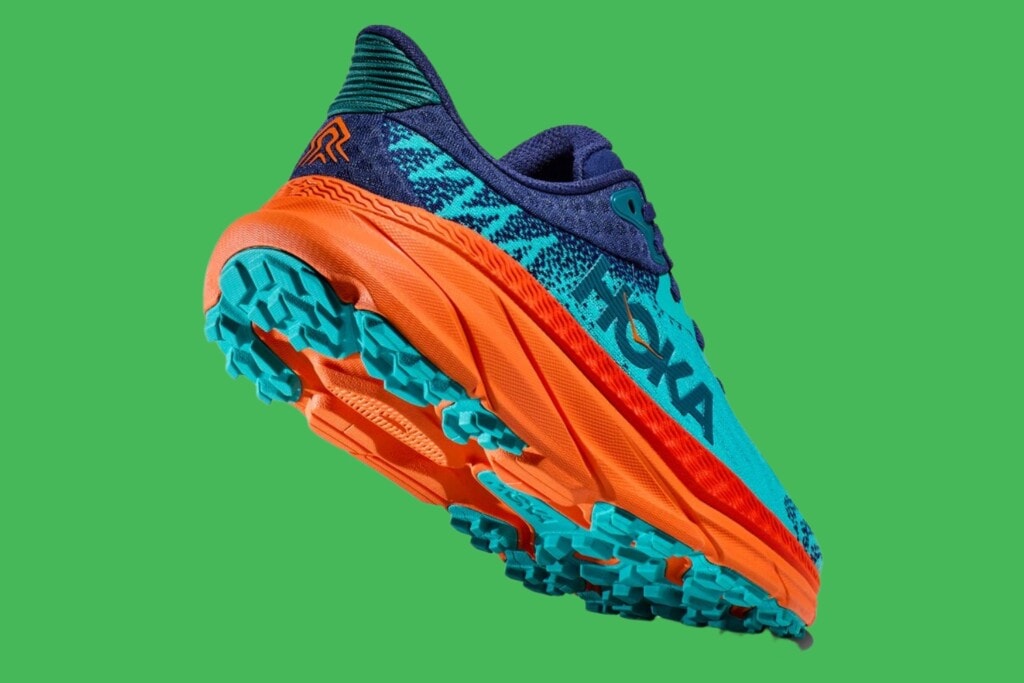
Hoka Challenger 6
The most perceptible change is undoubtedly the significant weight loss compared with previous versions and the Challenger 6 (-1.4 oz / 39 g), despite reinforced padding in the new upper (heel collar).
Version 7 also offers:
- An extra stack height for more comfort
- A one-piece upper that wraps around the foot for better locking
- New materials in the design of the midsole
- A new outsole design for improved grip and better traction
The changes made to this new model aim to improve your running experience on the road and trails alike.
In all, the Hoka Challenger 7 is an extremely versatile shoe that will appeal to both fans of the model and new runners!
Hoka Speedgoat 5
The Speedgoat offers a better grip and protection on highly technical terrain. See the comparison.
Did you know?
Since 2017, we have analyzed hundreds of trail running shoes, and thousands of runners trust us to find the perfect pair every month!
Discover our selection of the best trail running shoes here.

